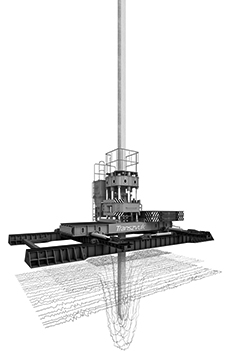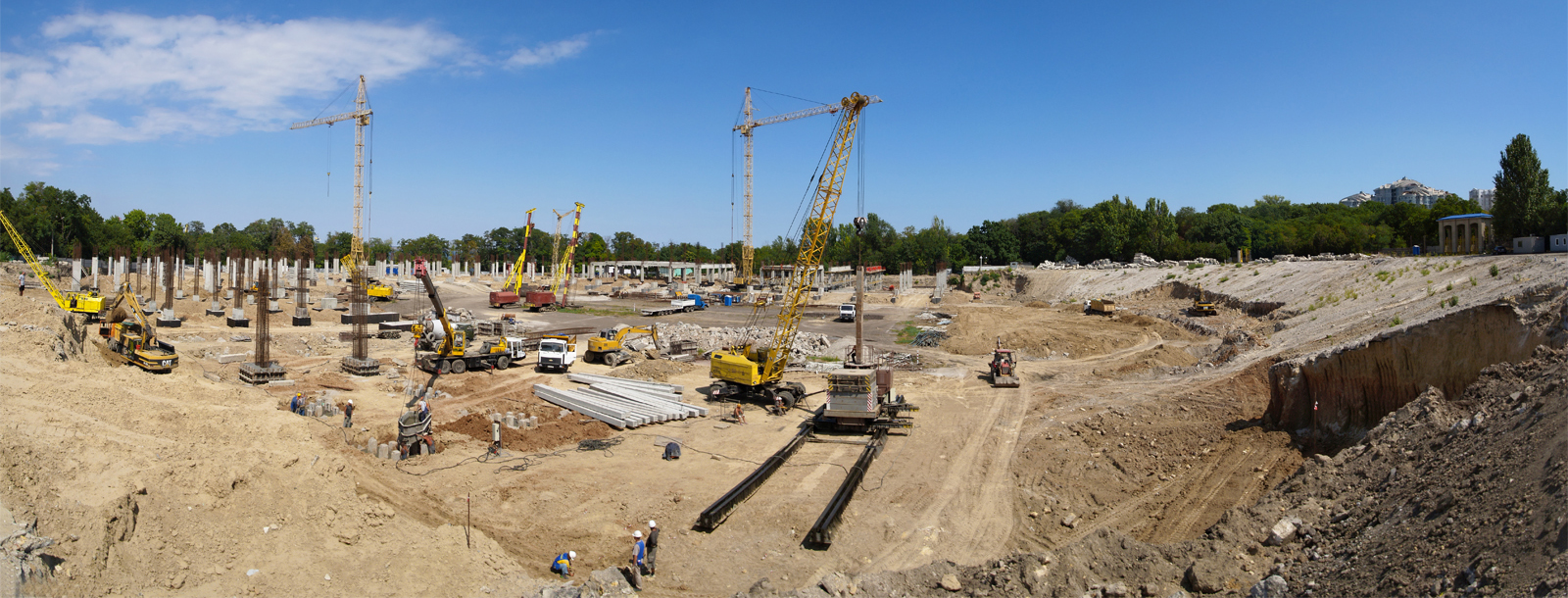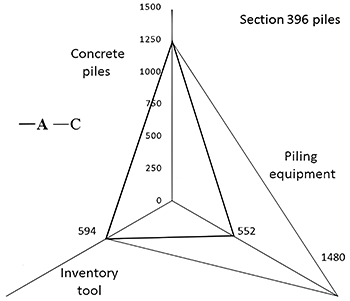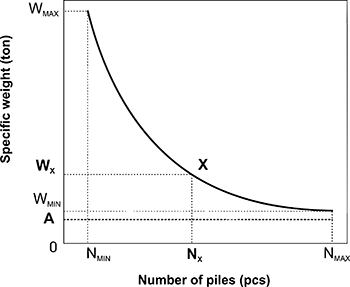|
|
Research and development of piling methods |
|||||||||||||||||||||||||||||||||||||||||||||||||||||||||||||||||||||||||||||||||||||||||||||||||||||||||||||||||||||||||||||||
|---|---|---|---|---|---|---|---|---|---|---|---|---|---|---|---|---|---|---|---|---|---|---|---|---|---|---|---|---|---|---|---|---|---|---|---|---|---|---|---|---|---|---|---|---|---|---|---|---|---|---|---|---|---|---|---|---|---|---|---|---|---|---|---|---|---|---|---|---|---|---|---|---|---|---|---|---|---|---|---|---|---|---|---|---|---|---|---|---|---|---|---|---|---|---|---|---|---|---|---|---|---|---|---|---|---|---|---|---|---|---|---|---|---|---|---|---|---|---|---|---|---|---|---|---|---|---|---|---|

Вдавливание и извлечение +38 095 8483234
|

INTRODUCTION By integrating cyber-physical systems into construction processes, the Construction Automation Strategy aims to improve the efficiency of the industry by overcoming the disparity between the pace of urbanization and the limitations of conventional equipment and technologies. To this end, equipment that combines conceptual design with automated processes, such as large-scale printing systems, is being developed worldwide. However, the problem of the disparity between the pace of construction of the above-ground parts of the building and the installation of the underground parts remains unresolved. The underground parts require significant labor costs and can account for up to 50% of the total construction, and remain slow, one of the most dangerous and expensive. Analysis of information sources shows that pile foundations can be made reliable by using prefabricated construction elements that are pressed into the ground, resulting in minimal environmental impact. Research has shown that conventional piling techniques do not provide sufficient labor productivity in constrained working environments. Inefficient auxiliary processes used by conventional piling machines in such conditions can consume more than 75% of the working time, resulting in reduced productivity and increased labor and operating costs. The relevance of the topic is determined by the lack of research on aggregate-modular type piling systems when used in foundation engineering. Construction Process ParametersThe study of the developed piling methods using the Aggregate-Modular Piling System was carried out from 2014 to 2022 in Ukraine during the construction of pile foundations for civil buildings. This is about 100 objects, the list of which is attached. To collect reliable data on piling processes using the specified technological schemes on real sites, large-scale experiments were conducted under production conditions. The initial construction parameters can be illustrated by the example of a multi-story residential complex with its underground space "Park Fontanov", Odesa, 2018. Equipment used: Aggregate-Modular Piling System, Piling machine CO-450 with Modular Coordinating Slide System. The standard architectural and design solutions for these buildings and their foundations made it possible to implement a combination of the options considered below. The research methodology involved determining the duration, labor input, and the total weight of the movable load during the implementation of the complex technological process on allocated sections of 126 and 396 piles. The study focused on the main and auxiliary processes and their readjustment. The study of auxiliary processes allowed us to determine efficiency indicators for single piles and multi-row pile fields. The comparison of these indicators, as a result of the preliminary processing of the construction data sets, is presented in the following section. Efficiency Indicators comparisonThe full-scale experiments allowed us to obtain actual data on the main and auxiliary technological processes for different foundation designs, organizational and technological schemes for pile work, as well as for various site conditions and scales of construction. The study of the main process – pile pressing into the ground, carried out in automatic mode, showed that the speed of pile pressing remains unchanged (1.5 m/min) for different soil conditions if the force of soil resistance does not exceed 1600 kN at a nominal pressing force of the piling machine of up to 2000 kN. To compare the efficiency indicators of the specified methods, a technological model of an anti-slide structure of 126 piles (С100.35) in a three-row arrangement on a site with a total length of 50 meters, was chosen. The chosen technological scheme is easily scalable, and its decomposition allows to analysis of single-row and double-row structures, as well as various pile arrangements. The following efficiency indicators were determined for the three piling methods: duration, productivity, labor input, and machine time for the total piling works and per unit of output. The unit of output is 1 concrete pile with section 350×350 mm, length 10 m, pressed into the ground through the inventory pile at a depth of 12 m. The duration of the individual technological processes and operations was determined in hours by timing at the construction sites. The process duration data are given in the table below. The duration of the main automated process (pile pressing) remains unchanged for three methods: Point, Lineal, and Coordinate.
The labor input for the total amount of piling work was determined by multiplying the duration of the processes by the team composition. The labor input for the three methods is shown in the table below. There was a significant reduction in the labor input for the most labor-intensive process identified: re-anchoring the Piling Machine with the service crane. It is more than double for the C method compared to the L method and more than thirty times compared to the P method. The process of sequentially reconnecting the modules was reduced by a factor of three, from 6 man-hours (L) to 2 man-hours (C), with the same characteristics as the basic automated process.
The following specific (unit) productivity indicators have been calculated from the data on labor input and total process duration for the total scope of work of 126 piles presented in the tables above. Total productivity (pile/hour) is the ratio of the total volume of work to the total duration of its execution. Hourly output is the number of piles installed per hour. Output per man (man-hours, number of piles) is the ratio of the amount of work to the total labor input. Output per pile (man-hours) is the ratio of the total labor input to the total amount of work. The data in the table below show the labor productivity indicators for three piling methods on a section of 126 piles. Labor productivity for the C method using the Modular Piling System is increased, up to 4 piles in 1 hour, due to the uninterrupted process: pile installation - machine displacement. This is the main feature of the automated process.
Machine time is the time required by machines and mechanisms to install a pile. The data in the table below shows the working time for the tree piling methods. The data shows that the machining time for the Piling Machine and the Modular Slide System remains unchanged for the three methods. Simultaneously, the most time-consuming and labor-intensive operations are performed by a crane.
To determine a crane operating input in large-scale production (Section 396 piles), the weight of a movable load: concrete piles, inventory tools, and piling equipment was investigated, according to identified processes. The data in the table below shows the total weight of the load by elements. There is a Piling Machine, anchor loads, elements of the Modular Slide System, and metal inventory tool we have to move by a service crane to install 396 piles for identified construction methods.
The specific (unit) weight of the load was reduced from 419 tonnes per pile for the P method to 8.5 tonnes for the C method and almost double that of the L method (16 tonnes). In the case of the flow method (A), this indicator is 6 tonnes per pile, while the weight of the concrete pile (С100.35) fed by the service crane, is more than 3 tonnes. The ratio in the figure below shows the balance between the summary weight of the concrete piles, the inventory tool, and elements of the equipment, moved by the service crane, with a fixed output volume of 396 piles.  Summary weight of the moved load by elements: The diagram above illustrates the conditions under which the developed technology achieves its maximum performance with the lowest labor input and the lowest equipment operating costs. It has been shown that the use of an additional longitudinal guide and an auxiliary cross carriage with a weight of up to 17 tonnes makes it possible to carry out assembly and anchoring operations in a single operation. At the same time, the summary weight of movable equipment and inventory tools is less than the summary weight of the concrete piles that have to be fed by a service crane. Technological Process ModelingThe different configuration and heterogeneity of the structures, as well as the different number of piles and their mutual arrangement in the foundation designs, require the use of different methods and options for piling works. The technological modeling of the construction processes was carried out for three classified piling methods: Point (P), Lineal (L), and Coordinate (C). Options are models of complex processes, developed according to standardized technological schemes:
The most important factors influencing all the efficiency indicators are the total number of piles in the project (scale of production) and the weight of the load (piles, machines, modules, inventory tools, and anchor loads) moved by the service crane during the piling process. The scale of production is the main design factor that affects all elements of the organizational and technological structure. As the number of piles increases, the number of operations required to move the specified loads with the service crane increases. The chosen efficiency indicator (specific weight of the load) does not depend on the duration of processes and operations, soil conditions, and foundation configuration, as well as random factors, which can be used for a comparative assessment of various work options. The main and auxiliary technological processes, in which the crane is used, are determined by three methods:
The output unit is a precast concrete pile (C100.35), with a section of 350×350 mm, and a length of 10 m, which is pressed into the ground at a depth of 12 m in automatic mode. The speed of machine positional displacement is 2.1 m/min, in manual mode. Generalizing Mathematical ModelsIt was found that the dependence of the efficiency indicators, calculated per pile, on the scale of production for three pile methods and different work options, is described by a single formula: \(E = A + \frac{B}{N}\) The relationship between the specific (unit) weight of the load moved by the service crane and the total number of project piles for different work options is described by the formula: \(w = \frac{\Sigma W}{N}\) Graphically, this function represents a hyperbolic curve, as shown in the figure below, which asymptotically approaches "A" as "N" approaches infinity. The minimum number of project piles required for each working option, mentioned above, is one pile corresponding to the maximum value of the specific weight of the moved load. The minimum value of the specific weight of the load is achieved when the maximum number of project piles is used in the module working space. For the current number of piles, a vertical line is drawn from the abscissa axis to the point of intersection with the hyperbola, and the corresponding value of the specific index is determined on the ordinate axis.  Relationship between the specific weight of the load and the number of project piles If the number of project piles exceeds Nmax, the equipment is moved to a new working area represented by the corresponding step (not shown), after which the hyperbolic nature of the relationship is maintained. Mathematical models have been developed to quantify efficiency indicators, such as the specific weight of the load moved by a service crane, as a function of the total number of project piles, the number of modules used, and the different options for their use. These models are accompanied by graphical illustrations and have practical value, making them suitable for use in the design and preparation stages of piling works. Similar approaches can be used to evaluate other unit efficiency indicators, such as productivity or direct costs, using appropriate algorithms and recommendations. Optimization of technological solutionsThe algorithm of variant design of complex technological processes is based on obtained mathematical models. It consists of three main stages:
At each stage, the following main tasks are expected to be performed. Variant design of complex technological processes using the specified mathematical models is based on the selection of the optimal solution according to the value of the specific efficiency indicator. The proposed methodology allows us to evaluate all methods of pile work at the stage of foundation design and to select the most effective combination of options, especially in complicated conditions, such as limited space and weak soils. The trained network can then be used to make informed decisions that optimize the construction process based on the specific objectives and constraints of the pile fields. CONCLUSION This page appears to be a technical report on the development of a technology for the automated construction of pile foundations based on the use of an Aggregate-Modular Piling System. The system incorporates a modular approach to pile base construction that provides architectural flexibility and adaptability for different construction projects, particularly in challenging conditions. Currently, the main process of pressing piles into the ground is automated. However, the concept implemented in AMPS is to automate the positional movements of the equipment in relation to the building's coordinate grid system. This can serve as a common platform for the interaction of construction machinery, compatibility of the CAD/CAM interface, and existing Building Information Models. During the industrial operation of the Piling System from 2010 to 2022, full-scale experimental tests were carried out on real construction sites to build up a database. The technological process modeling for 126 concrete piles in a multi-row arrangement provided the basis for determining the efficiency indicators of the developed flow production method and comparing it with the basic Point method. The total time for pile work was reduced from 200 hours to 36 hours; Mathematical models have been determined to establish the relationship between the specific weight of the load on the total number of project piles and the number of modules used, for different work options. The asymptotic minimum, for the equipment used and pile type C100.35, is 420 tonnes per pile for the point method and 6 tonnes for the flow coordinate method. The further direction of research is focused on solving the problem of complex automation. Since the objects are heterogeneous and many factors have to be taken into account, a new approach to solving optimization tasks is needed, both in the design phase and in the construction process. One possible approach is to use machine learning to optimize the piling processes in a way that maximizes the desired results while minimizing negative impacts or costs. The following practical results of this study can be used to optimize data using artificial neural networks. A database of construction processes and operations collected during the industrial equipment operation is used. A single standardized mathematical function is used to describe these processes for different work options. An optimization algorithm based on mathematical models is used to improve construction solutions. The approach uses a framework that combines a modular equipment grid with a building coordination grid system to capture data from building processes. Overall, the use of a database, mathematical models, algorithms, and frameworks can improve the efficiency of aggregate-modular type piling systems in foundation engineering, particularly under challenging conditions. |
|||||||||||||||||||||||||||||||||||||||||||||||||||||||||||||||||||||||||||||||||||||||||||||||||||||||||||||||||||||||||||||||
|
Инженерный Центр Трансзвук. Переулок Нахимова, 6, 65014 Одесса, Украина. Тел: +380674861177 | E-mail: ECTranszvuk@gmail.com |
||||||||||||||||||||||||||||||||||||||||||||||||||||||||||||||||||||||||||||||||||||||||||||||||||||||||||||||||||||||||||||||||
 https://orcid.org/0000-0002-7284-593X
https://orcid.org/0000-0002-7284-593X